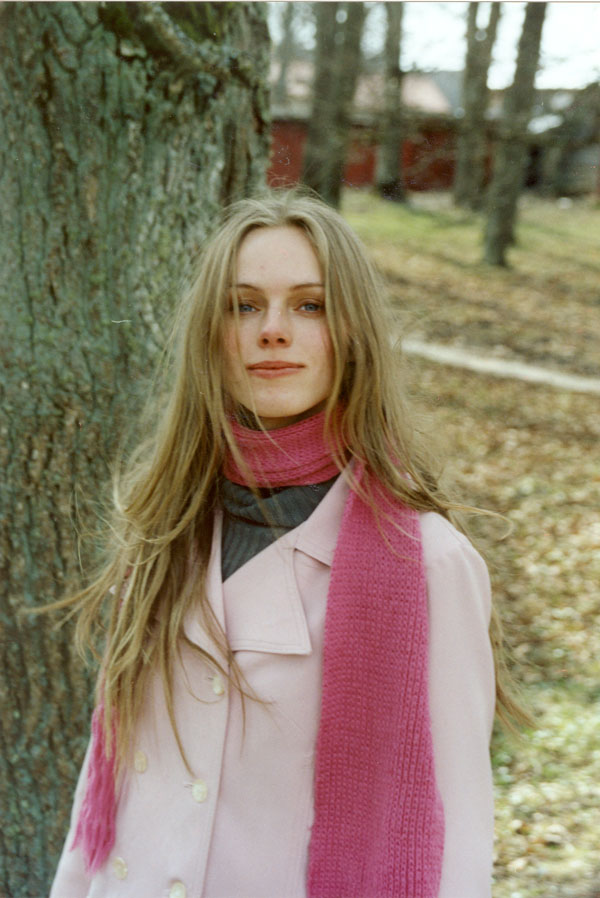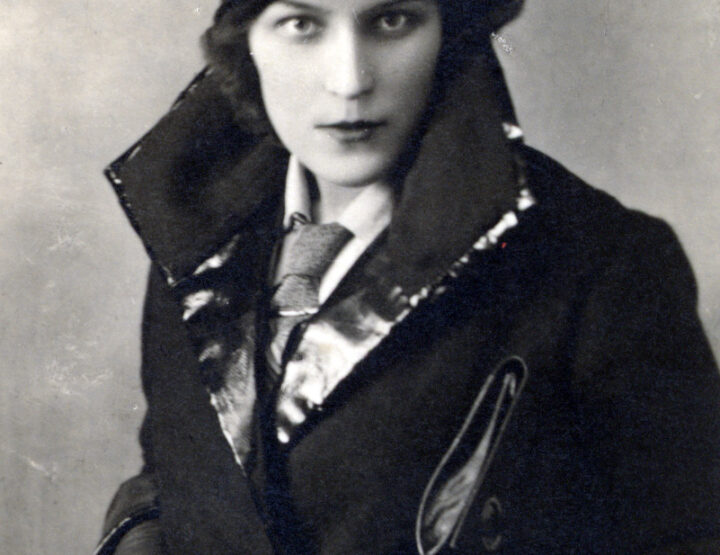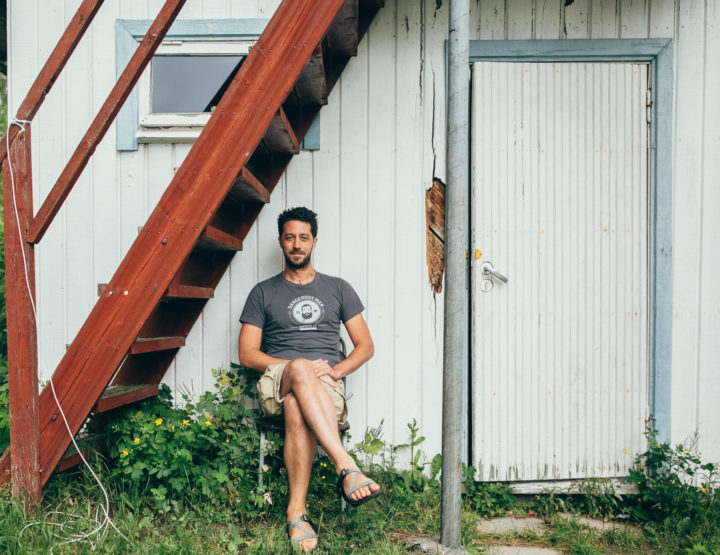Late one Saturday afternoon in September 2006 I sent my translations of 28 poems by Kristiina Ehin to Oleander Press in Cambridge, England and prepared myself mentally for the long wait. It normally takes at least three months for a publisher to reply to a submission, but can take much longer (sometimes even forever). The next day I looked at my emails and found one from Jeremy Toner, the director of Oleander. “Thank you very much indeed for sending me these beautiful poems,” he wrote, and asked when I could send him enough poems to publish a book. This was so utterly unprecedented – I’d never heard of anyone ever getting such a quick response – that at first I was somewhat dazed and didn’t quite understand what was happening. When the penny dropped I nearly fell off my chair.
I should have known better. Kristiina’s poetry has been leaving a trail of admirers in Ireland and England since I first started offering her work to literary magazines and publishers at the end of 2005. I know now with almost absolute certainty when I submit something of hers to a magazine that it will be printed. In the past year her work, poetry and prose, has appeared in such highly respected literary magazines as Poetry Ireland Review, Modern Poetry in Translation, The Stinging Fly, Cyphers and Crannóg.
The book is also now reality – The Drums of Silence, a selection of poems from Kristiina’s last three collections, published in May of this year. It has been shortlisted for the Poetry Society Popescu Prize for European Poetry in Translation. An American edition is expected in the near future. A dual-language edition of more or less the same poems and translations, entitled Noorkuuhommik – New Moon Morning, is published in Estonia by Huma, and Lapwing, the Northern Irish poetry publisher, is publishing My Brother is Going off to War – Variations on a Theme at the end of the year. This contains work – a poem and a short story by Kristiina, a long poem compiled by Hella Wuolijoki from folk songs – inspired by Venna sõjalugu (Brother’s Tale of War), a very old cycle of folk songs dealing with the horrors of war. Another UK publisher has expressed interest in publishing Kristiina’s second volume of poems in English translation in a couple of years’ time, and in fact expressed this interest on the basis of having seen 25 poems from The Drums of Silence shortly before it appeared. Such extensive interest in, and appreciation of, the work of an Estonian writer is quite unique in the English-speaking world.
Kristiina was born in Rapla, Estonia in 1977, the daughter of the well-known poets Ly Seppel and Andres Ehin. She has an M.A. in Comparative and Estonian Folklore from Tartu University, and has to date published four volumes of poetry – Kevad Astrahanis (Spring in Astrakhan), Simunapäev (St Simon’s Day), Luigeluulinn (Swan-bone City) and Kaitseala (Protected Area). She has won several prizes, including Estonia’s most prestigious poetry prize – the Cultural Endowment of Estonia prize for Kaitseala, which was written during a year spent as nature reserve warden on Mohni, an uninhabited island off the north coast of Estonia.. Last year a volume of short stories appeared, entitled Pillipuhujanaine ja Pommipanijanaine (Pipe-Playing-Woman and Bomb-Laying-Woman). She has also written a book of fairy tales, which will soon be published, and a play. I have already translated Pipe-Playing-Woman and Bomb-Laying -Woman and, in addition to working on her next volume of poems in English, have started translating the other works as well.
The poems in The Drums of Silence and Noorkuuhommik – New Moon Morning are arranged into four cycles in sequences set out in such a way that each poem leads on to the next in order to give the book a fundamental unity, something that underlies all of Kristiina’s work. Some of her themes are self-evident in the titles of the four cycles: ‘hair grey with youth’, ‘land of tree worshippers’, ‘the clustered berries of my loving / russet and heavy’ and ‘the birds for company’. There is clearly a strong folkloric thread running through these titles, but any consideration of Kristiina’s work demands a re-definition of categories, or creation of new categories. Or best of all, disposing of categories altogether, as Kristiina’s work defies being labelled and put into boxes. Her work transcends conventional notions of modern and traditional. It is at the same time both and neither – something altogether different. It is the work of a very contemporary woman who has enormous respect for the traditional wisdom that has come down to us through the centuries and millennia and is now in danger of disappearing. There is no dichotomy in this – it is all one and the same process as Kristiina lives it. This is part of what makes her work so exciting, surprising and challenging. The dichotomy is external – modern society’s self-imposed separation from its roots.
Much has been said and written about the role of folklore in Kristiina’s poetry and prose. In Western society the word ‘folklore’ conjures up images of dusty museums, of displays of folk dancing on stage, utterly out of context in front of an audience applauding politely, of something dead and gone, backward- looking, quaint, revived for its entertainment value, nostalgia or academic interest. But Kristiina is far more concerned with tradition, a living tradition thousands of years old, looking in all directions, a tradition that her work is trying to keep alive with the understanding that real folklore is an organic, living entity encompassing song, dance, crafts, indeed the whole of human life. Kristiina is very much a poet of today with very strong views concerning the issues touching the world she lives in, and certainly not afraid to express her convictions. But in contrast to most of her contemporaries she does this in the context of this organic view of the world, part of a continuum whose origins are hidden in the mists of time. This lends her work great weight and separates her deeply rooted work from that of many contemporaries who write as if poetry started in the 20th century, and whose work is therefore uprooted, cut off from the past, starting again from the beginning.
Kristiina celebrates her womanhood in her work. Her poems and stories are clearly written from a woman’s point of view and are very concerned with the role of women in society, though not in a politically correct feminist sense. She has been called a feminist, but feminism as we know it is a very recent phenomenon and here again we have a category that Kristiina’s work does not comfortably fit into, if at all, as Kristiina views contemporary women’s issues, and stands up for women’s rights, from an age-old perspective. Fundamental to the Estonian folk tradition is the fact that most of the vast body of Estonian folk song was sung and written by women. Kristiina has said that she views these traditional singers, who were expected to create songs spontaneously to suit the occasion, as role models. These women documented the joys, sorrows and injustices of life, great and small, from a female point of view in a remarkable oral tradition that Kristiina feels part of. Written history is men’s history. In this oral folk song tradition we learn what women have thought, felt and experienced throughout the centuries. It is a priceless source of understanding and a wellspring of the collective experience of women.
Kristiina often writes about the difficult relationship between women and men, and about the differences between the sexes that these difficulties stem from. It is particularly in her prose that she explores these issues, and does so with her usual great sensitivity and honesty, with wit and a distinct lack of finger-pointing. The surreal, dream-like, yet vividly tangible quality of many of these stories allows us to consider these age-old questions at their very core, unburdened by the baggage of contemporary polemics. Kristiina’s writing is always about essence and clarity, about experience and the insights and perceptions gained through experience. And here we come again to the subject of categories, or the lack of them. The need among some of the literary establishment to define the genre of a work has made the reception of Pipe-Playing Woman and Bomb-Laying-Woman a very sorry spectacle indeed. There have been surprisingly few reviews of this book – very strange in light of the fact that Kristiina is unquestionably one of Estonia’s foremost poets. This is no doubt due to the fact that the book is very idiosyncratic in the most positive sense and very honest in dealing with the issue of the differences between men and women. One of the few reviews, written by Mihkel Kaevats in Estonia’s leading literary magazine Looming, begins with the observation that it is very difficult to determine the book’s genre and then goes on to wilfully misunderstand the content and meaning of the stories by defining Kristiina as a rabid feminist. A case of categorization as security blanket.
There is a deep spiritual element in Kristiina’s work. She has travelled extensively among the Finno-Ugric minorities (Estonia’s close relations) in Russia, and feels a great affinity for their animistic beliefs. Again, there is no suitable category to describe this aspect of her work. It has absolutely nothing to do with new-age silliness. It is a profound respect for nature and for a system of belief that reveres and is inextricably bound up with nature. The magical animism at the heart of Finno-Ugric culture and the elemental significance of word and song suffuses every aspect of life. Some years ago a BBC correspondent went to Setumaa, which straddles Estonia’s south-eastern border with Russia. He reported that it was like landing in the middle of a real-life musical – women were constantly bursting into song. But he soon understood the deeper significance of this singing. He asked a woman, who was sitting in front of her house peeling potatoes and singing, what she was singing about. “Peeling potatoes,” she replied. This holistic view of life, this understanding of the intrinsic unity of all things also imbues Kristiina’s poetry and prose and makes it impossible to categorize her writings.
Kristiina’s work is a celebration of life in all its facets, great and small. She has the gift of seeing deep significance in the humblest things and sharing her insights with us. Her work is often deeply personal, so vivid and moving in the stream of memorable, sometimes startling images embedded in the lovely music resonating in her use of language, that the experiences she describes of her own joys and sorrows seem to become one’s own. And it is experiential rather than intellectual, conveying understanding through observation and feeling rather than analysis. It is indeed a great joy and honour to translate Kristiina’s work and make it accessible to the English-speaking world.
© ELM no 25, autumn 2007
Kristiina Ehin’s Drums of Silence on a New Moon Morning
By Ilmar Lehtpere

Kristiina Ehin –
Share:




